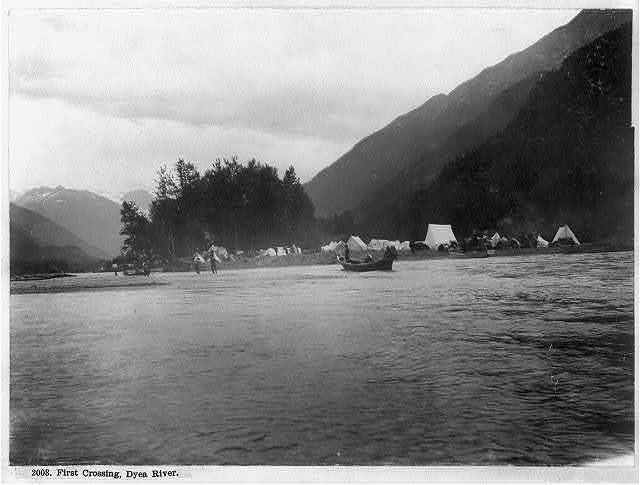 |
| 2009 (107-years) The memorial has survived vandals, floods and Soapy Smith wakes. (Note the rocks wedged under the surrounding wall to level it out.) |
 The Frank Reid is showing its age. I wonder how long it will last without proper shoring of the surrounding wall.
The Frank Reid is showing its age. I wonder how long it will last without proper shoring of the surrounding wall.
September 16, 2009,
NOVEMBER 30
1897: The Rocky Mountain News reports that Soapy is “in New York organizing a Klondyke expedition to start from the East in February (1898).”
~~~~~~~~~~~~~~~~~~~
ADDITIONAL NEWS
~~~~~~~~~~~~~~~~~~~
Soapy's Denver attorney Judge Belford published a book in 1897, entitled The Writings and Speeches of Hon. James B. Belford. According to my research Soapy first utilized Belford's services in August of 1889 for the assault on Rocky Mountain News editor John Arkins. He used him numerous times for the next 7 years, his services ending with Soapy's assault on saloon keeper John Hughes in 1895 and the court proceedings lasting into 1896 before Soapy was officially designated a fugitive of Denver's court.
The following comes from my book:
Judge Belford, a popular Republican Denverite, in 1870 had been appointed an associate justice of the Colorado Supreme Court. Upon admission of Colorado as a State, he was elected as a Republican to Congress and re-elected to several terms. He moved to Denver in 1883 and opened a law firm. Judge Belford was known as the “Red Rooster of the Rockies” because of his flaming red hair and “magnificently roseate beard.” In August 1891 he began writing for the News a series of controversial articles on modern spiritualism, evolution, materialism, miracles, ghosts, and the after-life.
Belford's book can be viewed and read at Archive.org here: http://www.archive.org/stream/writingsspeeches00belf#page/n7/mode/2up
Jeff Smith
.









































